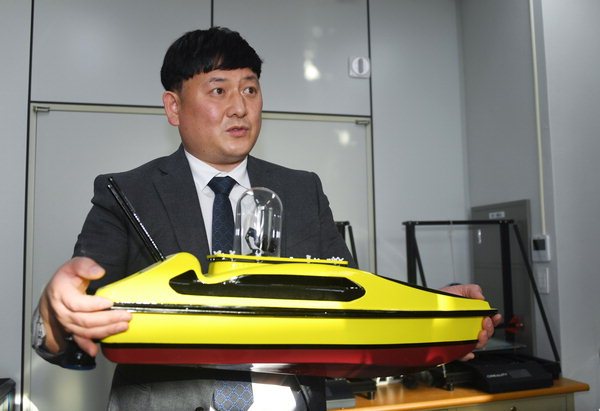Auto-avoidance technology gives wings to seaplanes (2021-11-26)
Main text
Receive technology transfer from Changwon National University
Optimized avoidance of floating objects at sea
Helps the elderly by reducing manual operation
Complete development and commercialization before June next year
For small and medium-sized businesses, patents and technology are invaluable assets. However, technology development is not easy for companies without specialized research centers. Securing technology is the key to developing new products.
The patented technologies needed by companies are held by universities and research institutes. Networking between companies and technology-holding institutions is key, and without mutual collaboration, patented technologies will be lost or companies will suffer from difficulties in developing new technologies.
Gyeongnam Technopark is promoting the Technology Trade Promotion Network project to resolve this matching imbalance. <The Gyeongnam Minjoo Ilbo> provides an overview of the project and introduces three SMEs and startups in the province that have solved their technical difficulties.
◇ From technology brokerage to holding a trading market = Gyeongnam Technopark's (Gyeongnam TP) Technology Trade Promotion Network project is a project to promote technology commercialization and technology trading in the region. Gyeongnam TP conducts a brokerage business to introduce patented technologies developed by public research institutes to companies. It also holds a technology trading marketplace to promote and match excellent technologies. It also provides prototype production support to help commercialize the transferred technologies.
As a technology transaction promotion network project, Gyeongnam Technopark has been supporting the transfer and commercialization of corporate technologies using a total project cost of KRW 775.2 million for 33 months from April 2020 to December 2022.
Along with the Technology Transaction Promotion Network project, the three companies introduced here are also participating in Gyeongnam TP's SME R&D Commercialization Support Center project. The SME R&D Commercialization Support Project is a project that supports SMEs in Gyeongnam to plan R&D projects. It provides support from writing business plans to various R&D consulting and commercialization.
An official from the Technology Commercialization Team of the Gyeongnam TP Enterprise Support Group explained, "It is a support project with synergistic effects, such as R&D support projects leading to technology trade promotion network projects, or technology commercialization linked to R&D support projects."
◇ Evolving into an obstacle-avoiding floating drone = 'JD', located in the Jinju Knowledge Industry Center, is a company specializing in shipbuilding design. It was founded in 2017 and has been working on the development of marine drones since 2019.
CEO Park Joong-gun (40) was in charge of design and R&D for a shipyard and founded JD after the company went bankrupt. With 16 years of design experience, he built JD into an early design specialist.
"The shipbuilding design field does not generate consistent revenue without orders, so I saw the need for business diversification," Park said. "I saw the drone field as a blue ocean and jumped in."
Starting with KRW 230 million in sales and three employees in 2018, J.D.'s business has quadrupled to KRW 1 billion in sales and 12 employees this year, thanks to business diversification.


 KOR
KOR